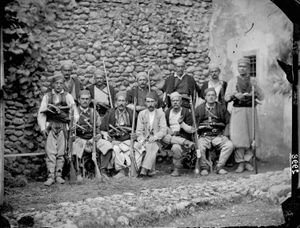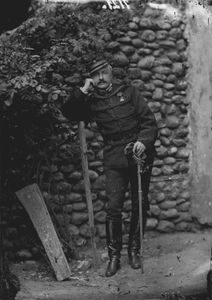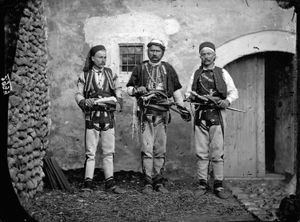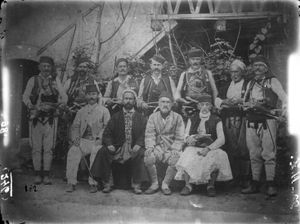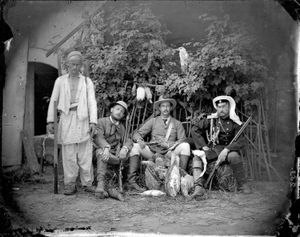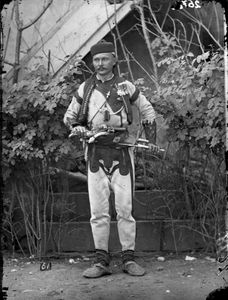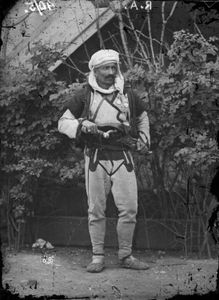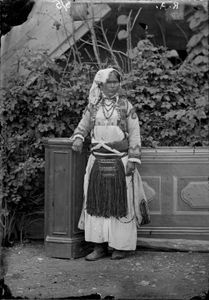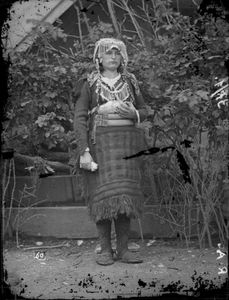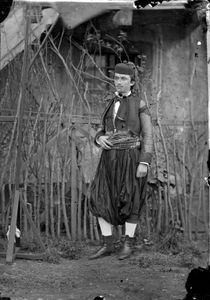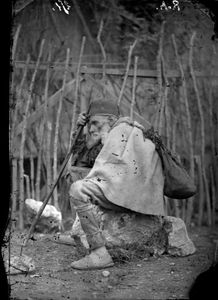The Meeting Tent of a Courtyard
The location and the activity of the first photographic studio set up by Pietro Marubbi in Shkoder is still unknown, but we consider the 1856 as the year when the studio was founded in Shkoder.
On published texts we find that the first studio, equipped with the necessary appliances of the time, was built during 1885-1890. It is thought that the yard adjacent to Pietro’s house was used as a studio from the day the activity first opened to the time the studio was founded.
Men and women, dressed in traditional city clothing, village or mountain clothing, groups of patriots, governors, representatives of the Border Commission, delegates and politicians, they all pose inside this Shkoder courtyard. The leaders of Mirdita, visiting Shkodra to attend the funeral of Bib Doda, pose in the same courtyard with cobblestones and walls built with the stones of Kir River. Marash Uci and Prek Cali’s sons pose in another corner. In these two photos we find the same scene, but photographed from a different angle.
The characters pose alone and together in front of the photographer who, with his stand fixed in one place, moves only the camera angle around the courtyard. On the photographs we are able to identify the seasons basing on the clothes people wear, the presence of the absence of tree leaves and we understand that the photographer used this courtyard for a long time.
Among the images, the photograph of Mati Kodheli is very impressive. It is one of the very few photographs of him found in the archive. This image remains special because it is possible to notice the intervention of the photographer who took care of every small detail. From what it is possible to understand, the picture was taken on a cold day because the trees have lost their leaves. It seems as if the photographer has previously looked to the garden where the person will pose and has built a scenario with woods and tree roots taken from elsewhere. The most interesting fact is the combination of light. On the left we can see a mechanism of gears which controls a tent above which softens the strong light and the sharp contrasts, turning this courtyard from an outdoor to an indoor environment.
The selected images introduce us with a reliable version of the context where Marubbi took his first photographs. They perhaps suggest us that all this history started from a characteristic courtyard in Shkoder which was the scene where different people came to pose.
It was a typical Shkoder courtyard surrounded by walls, trees and shrubs, from where one could see the house door and windows, the staircase and handrail made of twigs and branches. It was a courtyard both in the sense of a seat where the king, prince or the governor could come and stay and in the sense of a shelter for the villager and the beggar. It was a courtyard which provided the advantage of taking photographs using natural light. Because the intensity of light had to be adjusted, the courtyard was covered with a cloth that softened the light, turning it into a tent where one could stay for a short time.
For this reason it looked like “the tent of a meeting”, a meeting point for all, locals and foreigners who came there to meet themselves through the Marubi lens.
Curated by Luçjan Bedeni
